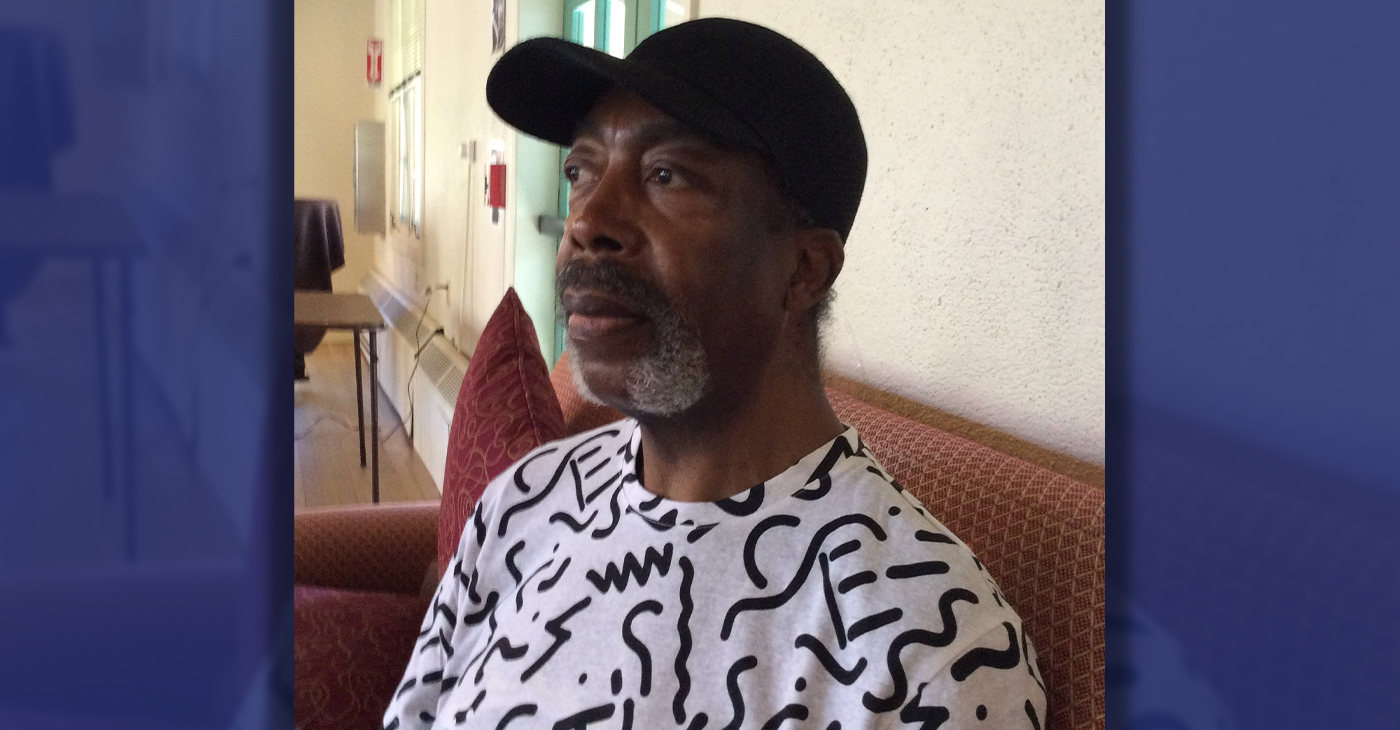Business
AmEx Troubles: Some Cardholders Can Leave Home Without It

In this Jan. 20, 2010 file photo, American Express cards are posed for a photograph in Phoenix. Amex’s stock is down 11 percent this year, making it the second-biggest decliner on the Dow Jones industrial average. (AP Photo/Ross D. Franklin, File)
KEN SWEET, AP Business Writer
NEW YORK (AP) — For decades, American Express was the undisputed credit card of choice among corporate road warriors, the wealthy and the well-traveled, who lived by the company’s slogan, “Don’t leave home without it.”
But changing consumer habits, extremely aggressive competition and increased pushback from its merchants are putting heavy pressure on AmEx.
Rivals are trying to steal away business and are succeeding in some cases. Costco, for example, is ending its 15-year relationship with AmEx and defecting to Citigroup and Visa starting next March. And airlines that used to give VIP lounge access to AmEx cardholders have been switching in recent years to other credit card companies.
Compounding its troubles, AmEx recently lost a major government antitrust lawsuit, a verdict that could damage its ability to compete.
“The competitive environment for AmEx is very challenging,” said Jason Arnold, a Wall Street analyst who covers AmEx for RBS Securities. “Major competitors have all directed their efforts to take chunks away from their business. They’ve got serious problems.”
As a result, American Express stock is down 12 percent this year. Analysts, on average, have cut their 2015 profit forecast from $6.2 billion to $5.6 billion. AmEx recently announced 4,000 layoffs, or about 6 percent of its workforce. And CEO Kenneth Chenault will face a skeptical Wall Street audience Wednesday at the company’s annual investor day.
One of the biggest threats to AmEx is the slew of competing cards aimed at the well-to-do, sometimes with lower annual fees. Card issuers have energetically courted merchants who used to accept only American Express. Merchants who once coveted AmEx’s high-net-worth cardholders are discovering they can find the same customers elsewhere.
Citigroup, in particular, has been going after AmEx’s core customer. Citigroup has hired executives away from AmEx over the past few years to help it overhaul its credit cards and revamp its loyalty program, known as ThankYou. Citi Cards CEO Jud Linville, for example, worked at AmEx for nearly 20 years.
The capture of Costco by Citigroup and Visa was the biggest blow to AmEx. The warehouse-club chain accounted for $80 billion of spending on AmEx’s network last year and 10 percent of AmEx’s cards.
“Costco was a real punch in the gut,” said David Robertson, publisher of the Nilson Report, a major trade journal for the credit card industry.
Citi also recently created a card called Citi Prestige, a high-annual-fee card aimed at AmEx Platinum Card holders.
“Citi’s ThankYou program, a year and a half ago, was pretty much worthless,” said Brian Kelly, editor in chief of thepointsguy.com, a travel and credit card rewards tracking website. “But over the past year Citi has really started to get into the game. They are not at a Chase or AmEx level yet, but based on where they have gone in a short amount of time, they’re becoming quite formidable.”
JPMorgan Chase introduced its own reward cards in 2009 with a program similar to AmEx’s. It is called Chase Ultimate Rewards.
Airport lounge access was once a perk basically guaranteed by AmEx. But American Airlines switched allegiance last year, turning over exclusive access to lounges to Citi cardholders. AmEx cardholders lost access to United Continental’s lounges in 2011 and lost the ability to transfer their points to United in 2012.
Even Discover Financial has gotten into the game. Last month, it introduced a credit card focused on building up miles that can be redeemed for travel.
AmEx hasn’t sat idle. To generate revenue, it has raised annual fees and interest rates on some products. It has also added perks for its customers, such as waiving foreign transaction fees and giving a $100 credit for incidental airline expenses for Gold Card members.
And when AmEx parted ways with United Continental, it went ahead and opened its own airport lounges. It has 13 worldwide so far, with plans to open more this year.
“American Express is still the gold standard when it comes to their rewards program, but lately it seems like all they’re doing is playing catch-up,” Kelly said.
While competitors have been moving upmarket, AmEx in response has been moving in the opposite direction. It now has two pre-paid debit cards, one of them with Wal-Mart. Pre-paid debit cards are typically aimed at low-income consumers who may not have checking accounts. The company also launched a no-annual-fee credit card last year aimed at “everyday” purchases — not the travel-heavy, corporate-expense-account business AmEx is known for.
AmEx isn’t going to let Citi walk away with its Costco card customers without a fight, either. It plans to spend aggressively to try to keep some of them because roughly 70 percent of spending on those cards was done outside the stores, according to AmEx.
“I don’t think there’s anything structurally wrong at AmEx,” said Sanjay Sakhrani, an analyst at Keefe, Bruyette & Woods. “They’re going to get in front of the revenue they are going to lose next year when the Costco relationship ends.”
Along with increased competition, AmEx is facing heavier regulatory pressure. Last month, the Justice Department won an antitrust lawsuit against American Express over its practice of making merchants sign agreements not to express a preference for one card over another.
If AmEx loses on appeal, merchants will be free to express their preferences, and that could force the company to lower the percent it charges them to process cards. That would be a drastic hit to AmEx’s bottom line, and company executives have acknowledged as much.
During the trial last summer, AmEx’s Chenault said the company would be “fighting for our survival” if it lost the case.
Copyright 2015 The Associated Press. All rights reserved. This material may not be published, broadcast, rewritten or redistributed.
Bay Area
Mayor Breed Proposes Waiving City Fees for Night Markets, Block Parties, Farmers’ Markets, Other Outdoor Community Events
Mayor London N. Breed introduced legislation on April 26 to encourage and expand outdoor community events. The first will waive City fees for certain events, making them less costly to produce. The second will simplify the health permitting for special event food vendors through the creation of an annual permit. Both pieces of legislation are part of the Mayor’s broader initiative to bring vibrancy and entertainment to San Francisco’s public right of ways and spaces.

Mayor’s Press Office
Mayor London N. Breed introduced legislation on April 26 to encourage and expand outdoor community events.
The first will waive City fees for certain events, making them less costly to produce. The second will simplify the health permitting for special event food vendors through the creation of an annual permit. Both pieces of legislation are part of the Mayor’s broader initiative to bring vibrancy and entertainment to San Francisco’s public right of ways and spaces.
Outdoor community events are integral to San Francisco’s vibrant culture and sense of community. These events include night markets, neighborhood block parties and farmers markets, and bolster the City’s economy by supporting local businesses and attracting tourists eager to experience San Francisco’s unique charm and food scene.
They offer residents, workers and visitors, opportunities to engage with local artists, musicians, and food vendors while enjoying the San Francisco’s stunning outdoor spaces and commercial corridors.
The legislation will allow for more and new community gatherings and for local food vendors to benefit from the City’s revitalization.
“San Francisco is alive when our streets are filled with festivals, markets, and community events,” said Breed. “As a city we can cut fees and streamline rules so our communities can bring joy and excitement into our streets and help revitalize San Francisco.”
Fee Waiver Legislation
The events that can take advantage of the new fee waivers are those that are free and open to the public, occupy three or fewer city blocks, take place between 8 a.m. and 10 p.m., and have the appropriate permitting from the ISCOTT and the Entertainment Commission.
The applicant must be a San Francisco based non-profit, small business, Community Benefit District, Business Improvement District, or a neighborhood or merchant association. Fees eligible for waiver include any application, permit, and inspection/staffing fees from San Francisco Municipal Transportation Agency, Department of Public Health, Fire Department, Entertainment Commission, and Police Department.
Currently, it can cost roughly anywhere between $500-$10,000 to obtain permits for organized events or fairs, depending on its size and scope. Organizations and businesses are limited to a maximum of 12 events in one calendar year for which they can receive these fee waivers.
Food Vendor Streamlining Legislation
The second piece of legislation introduced will help special event food vendors easily participate in multiple events throughout the year with a new, cost-effective annual food permit. Food vendors who participate in multiple events at multiple locations throughout the year will no longer need to obtain a separate permit for each event. Instead, special event food vendors will be able to apply and pay for a single annual permit all at once.
“Many successful food businesses either begin as pop-up vendors or participate in special events to grow their business,” says Katy Tang, Director of the Office of Small Business. “Giving them the option for an annual special event food permit saves them time and money.”
Currently, food vendors are required to get a Temporary Food Facility (TFF) permit from the Department of Public Health (DPH) in order to participate in a special event, among permits from other departments.
Currently, each special event requires a new permit from DPH ranging from $124-$244, depending on the type of food being prepared and sold. Last year, DPH issued over 1,500 individual TFF permits. With the new annual permit, food vendors selling at more than four to six events each year will benefit from hundreds of dollars in savings and time saved from fewer bureaucratic processes.
“This legislation is a step in the right direction to make it easier for food vendors like me to participate in citywide events,” said Dontaye Ball, owner of Gumbo Social. “It saves on time, money and makes it more effective. It also creates a level of equity.”
Bay Area
Faces Around the Bay: Sidney Carey
Sidney Carey was born in Dallas, Texas. He moved with his family to West Oakland as a baby. His sister is deceased; one brother lives in Oakland. Carey was the Choir Director at Trinity Missionary Baptist Church for 18 years.

By Barbara Fluhrer
Sidney Carey was born in Dallas, Texas. He moved with his family to West Oakland as a baby. His sister is deceased; one brother lives in Oakland.
Carey was the Choir Director at Trinity Missionary Baptist Church for 18 years.
He graduated from McClymonds High with a scholarship in cosmetology and was the first African American to complete a nine-month course at the first Black Beauty School in Oakland: Charm Beauty College.
He earned his License, and then attended U.C., earning a secondary teaching credential. With his Instructors License, he went on to teach at Laney College, San Mateo College, Skyline and Universal Beauty College in Pinole, among others.
Carey was the first African American hair stylist at Joseph and I. Magnin department store in Oakland and in San Francisco, where he managed the hair stylist department, Shear Heaven.
In 2009, he quit teaching and was diagnosed with Congestive Heart Failure. He was 60 and “too old for a heart transplant”. His doctors at California Pacific Medical Center (CPMC) went to court and fought successfully for his right to receive a transplant. One day, he received a call from CPMC, “Be here in one hour.” He underwent a transplant with a heart from a 25-year- old man in Vienna, Austria
Two years later, Carey resumed teaching at Laney College, finally retiring in 2012.
Now, he’s slowed down and comfortable in a Senior Residence in Berkeley, but still manages to fit his 6/4” frame in his 2002 Toyota and drive to family gatherings in Oakland and San Leandro and an occasional Four Seasons Arts concert.
He does his own shopping and cooking and uses Para Transit to keep constant doctor appointments while keeping up with anti-rejection meds. He often travels with doctors as a model of a successful heart-transplant plant recipient: 14 years.
Carey says, “I’m blessed” and, to the youth, “Don’t give up on your dreams!”
Business
Maximizing Your Bank Branch Experience
In a world of online tools that let you make banking transactions with the touch of a button, the idea of visiting a branch might seem unnecessary. However, if you haven’t visited your local branch recently, you might be surprised by what it has to offer. Your branch is much more than a place to deposit and withdraw money – it can offer the opportunity to build valuable relationships with people who can help you achieve financial independence.

Sponsored by JPMorgan Chase & Co.
In a world of online tools that let you make banking transactions with the touch of a button, the idea of visiting a branch might seem unnecessary.
However, if you haven’t visited your local branch recently, you might be surprised by what it has to offer. Your branch is much more than a place to deposit and withdraw money – it can offer the opportunity to build valuable relationships with people who can help you achieve financial independence.
Diedra Porché, Head of Community and Business Development at Chase, talks about how the bank model has evolved to maximize the branch experience for customers; how connecting with your local branch team can help you think differently about money and investing for your future.
How can a customer feel connected to a bank branch?
I love that question because we ask ourselves the same thing every day. Being part of the community means meeting with local leaders to find out what they need from us and then designing our branches around that. For example, at some of our community branches we have what we call a living room where we can host financial workshops, small business pop-up shops or nonprofit organization meetings. We also hire locally. You feel much more connected talking about financial aspirations with people from your community who went to the same high school, place of worship or maybe frequented the same recreation center down the street when they grew up.
How can I build a relationship with my bank?
Customers should feel comfortable sharing their goals, needs and wants with their banker. Also, it helps to remember the Community Manager is there to help solve your finance challenges and build a roadmap for success. You might have a short-term or long-term goal to open a business, build your credit, become debt-free, buy a home, or save for retirement, and our community team can help. At Chase, we strive to make dreams possible for everyone, everywhere, every day. Your financial future starts with building those relationships.
How can customers change negative perceptions they have about managing their money?
Far too often, customers are intimidated when they visit a bank. Our goal is to demystify banking and money myths empowering people to make the right decisions. For example, a big myth is assuming you need a lot of money to have a bank account. You don’t! Another myth is you need to carry a balance on your credit card to build credit — actively using your credit card can demonstrate that you can use credit responsibly but carrying a balance won’t necessarily improve your credit score. Finally, understanding mobile and online banking safety is key. There are so many safeguards and protections in place to guard your personal information and funds.
What’s an easy step one can take to shift their financial behavior right now?
Cultivating self-awareness is a good first step. Start by taking inventory of your spending. Be honest with yourself about what you need and what you want. Too often, people confuse the two, which leads to bad decisions. Rent is something you need to pay. An extra pair of shoes is something you may want but before you buy them ask yourself if that’s the best use of your hard-earned money. Too often, our beliefs and our fears shape our financial realities. If any of those beliefs are limiting your financial behavior, it’s important to question and examine them, and then decide you’re open to learning something different.
What’s one perception about banking that you’d like to change?
I think folks are surprised there are so many resources available and accessible both at our branches and online, it’s always a good idea to visit a nearby branch and speak to a Community Manager or banker. Outside of what we offer in-branch, our teams also work with local neighborhood partners who provide a variety of services to support the community, businesses and residents. I received a unique piece of feedback from an employee who started with the bank and had lived in the same community his whole life. When he visited his local community branch, he said, “Diedra, when I walked in, I felt dignified.” Every time I recount that story, it warms my heart because that’s what we want — we want our centers to belong to the community.
-

 Community3 weeks ago
Community3 weeks agoFinancial Assistance Bill for Descendants of Enslaved Persons to Help Them Purchase, Own, or Maintain a Home
-

 Business3 weeks ago
Business3 weeks agoV.P. Kamala Harris: Americans With Criminal Records Will Soon Be Eligible for SBA Loans
-

 Activism3 weeks ago
Activism3 weeks agoOakland Post: Week of April 10 – 16, 2024
-

 Community3 weeks ago
Community3 weeks agoAG Bonta Says Oakland School Leaders Should Comply with State Laws to Avoid ‘Disparate Harm’ When Closing or Merging Schools
-

 Community2 weeks ago
Community2 weeks agoRichmond Nonprofit Helps Ex-Felons Get Back on Their Feet
-

 Community2 weeks ago
Community2 weeks agoOakland WNBA Player to be Inducted Into Hall of Fame
-

 Community2 weeks ago
Community2 weeks agoRPAL to Rename Technology Center for Retired Police Captain Arthur Lee Johnson
-

 Activism1 week ago
Activism1 week agoOakland Post: Week of April 24 – 30, 2024























































